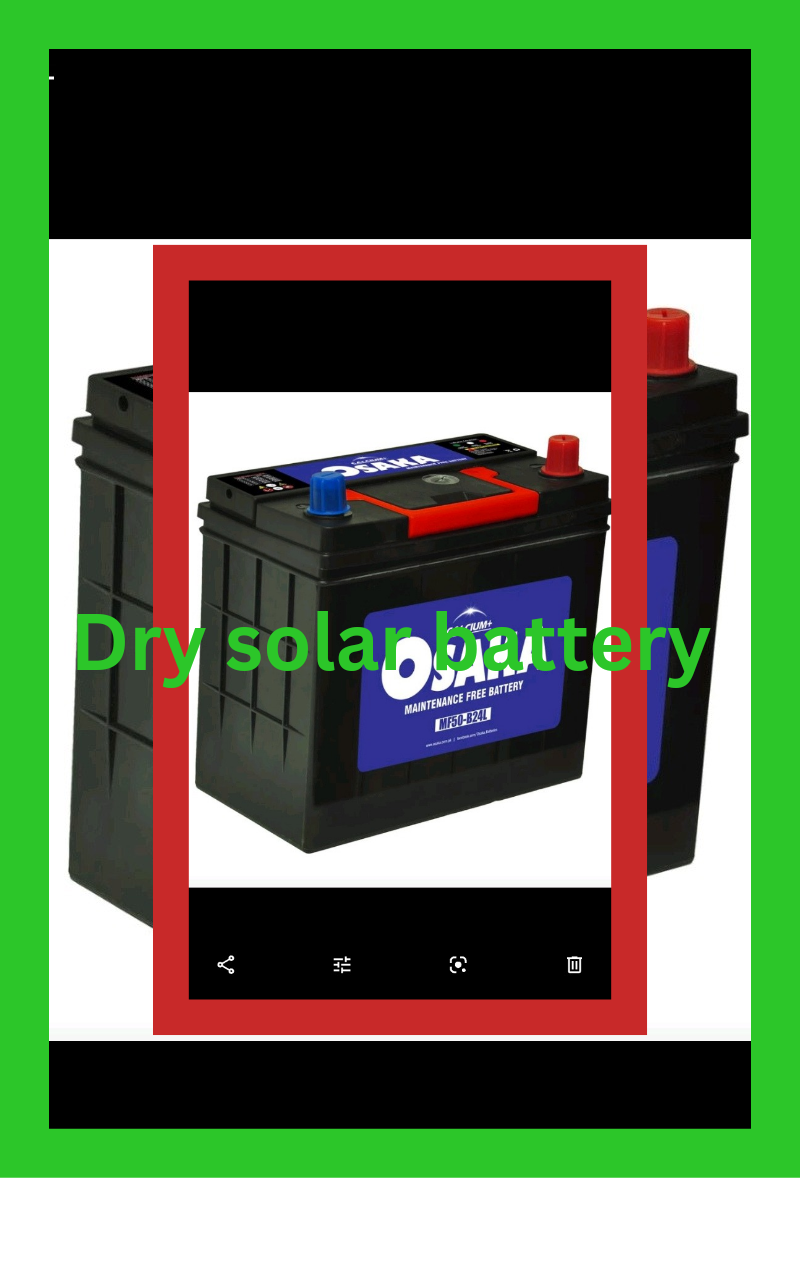
Dry batteries, in the context of solar systems and other applications, typically refer to maintenance-free lead-acid batteries. These batteries are called “dry” because they do not require adding water to maintain electrolyte levels, unlike traditional flooded lead-acid batteries. Here are the common types of dry batteries used in solar systems:
- AGM (Absorbent Glass Mat) Batteries: AGM batteries use a fiberglass mat to absorb the electrolyte. They are sealed and maintenance-free, making them suitable for deep cycle applications like solar energy storage. AGM batteries are known for their reliability, low maintenance, and ability to handle cycling (charge-discharge) well.
- Gel Batteries: Gel batteries use silica to turn the battery electrolyte into a gel-like substance. This immobilizes the electrolyte, making the battery spill-proof and resistant to vibration. Gel batteries are also maintenance-free and offer good deep cycle performance, making them suitable for solar energy storage where reliability and longevity are key.
- Lithium-ion Batteries: While not technically lead-acid, lithium-ion batteries are increasingly used in solar applications due to their high energy density, longer lifespan, and faster charging capabilities compared to lead-acid batteries. They are also maintenance-free and offer excellent efficiency in storing and releasing energy.
Each type of battery has its advantages and considerations in terms of cost, performance, and suitability for different solar energy system setups. When choosing a battery type for a solar system, factors such as upfront cost, lifecycle cost, maintenance requirements, and environmental conditions should be taken into account.
The capacity of dry batteries used in solar systems, such as AGM or Gel batteries, is typically measured in ampere-hours (Ah) or kilowatt-hours (kWh). The capacity determines how much energy the battery can store and subsequently deliver over a period of time. Here are some general points about battery capacity:
- Ampere-Hours (Ah): This is a measure of the total charge a battery can deliver over a specific period of time. For example, a battery rated at 100 Ah can theoretically deliver 100 amps of current for one hour, or 1 amp for 100 hours, before it is fully discharged.
- Kilowatt-Hours (kWh): This is a measure of the energy capacity of the battery and is calculated by multiplying the battery’s voltage by its ampere-hour capacity. For instance, a 12V battery rated at 100 Ah has a capacity of 1.2 kWh (12V x 100Ah = 1200 Wh = 1.2 kWh).
- Factors Affecting Capacity: The actual usable capacity of a battery in a solar system depends on several factors including the depth of discharge (DoD) (how much of the battery’s capacity is used before recharging), temperature, charging and discharging rates, and the age and condition of the battery.
- Choosing Battery Capacity: The capacity needed for a solar system depends on factors such as the energy demand (load), the duration of autonomy (how long you need the battery to supply power without recharge), and the size of the solar panel array. It’s crucial to size the battery bank appropriately to ensure reliable operation and longevity of the system.
When selecting a dry battery for a solar system, understanding its capacity in terms of Ah or kWh helps ensure that the system meets the energy storage requirements effectively.